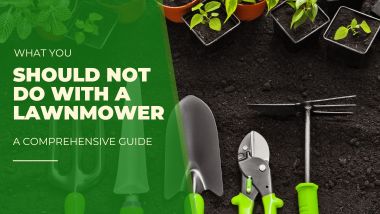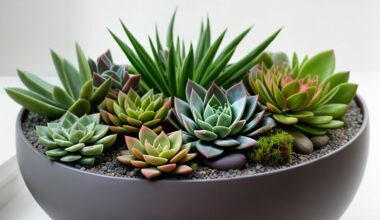Ever found yourself in a garden, scissors in hand, wondering if these everyday tools can double as your pruning partners? “Can I use scissors to prune?” you ask yourself. Well, let’s settle the mystery.
There’s something inherently satisfying about snipping away at overgrown foliage with our trusty shears. When armed with just the right technique and know-how, we could potentially transform our gardens into verdant masterpieces! But are regular scissors truly up to this botanical challenge?
As we venture deeper into this intriguing topic, prepare to uncover some surprising truths and handy tips about pruning prowess. Will your favorite craft tool make the cut or fall short in these leafy showdowns? Stay tuned because things are about to get interestingly prickly around here!
The Ability of Scissors to Prune
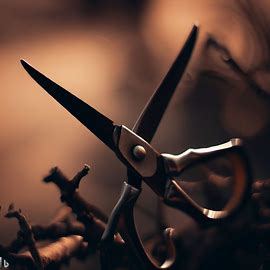
Pruning is an essential task for maintaining the health and appearance of plants.
While most people think of pruning shears or other specialized tools when it comes to pruning, scissors can also be a useful option.
Many household scissors are sharp enough to make clean cuts on small branches and foliage.
However, before you start trimming your plants with any pair of scissors you find in your drawer, it’s important to understand the right techniques and safety precautions involved.
Choosing the Right Scissors for Pruning
Not all scissors are created equal when it comes to pruning. When selecting a pair of scissors for this task, there are several factors you should consider.
Look for scissors that have sharp blades made from high-quality stainless steel or carbon steel as they will provide cleaner cuts and last longer.
Additionally, choose a pair that has comfortable handles with good grip as it will ensure greater control during pruning.
Process and Techniques of Pruning with Scissors
Pruning with scissors requires precision and care. Begin by assessing the plant and identifying any dead or diseased branches that need removal.
Hold the branch gently but firmly near its base using one hand while using the other hand to make a clean cut at a slight angle just above a leaf node or bud facing outward from the center of the plant. This technique encourages new growth in desired directions.
For thin stems or delicate foliage, hold them between your thumb and forefinger so that you have better control over where exactly you want to make cuts. Ensure each cut is swift yet deliberate so as not to cause unnecessary damage.
Maintenance Care for Pruning Scissors
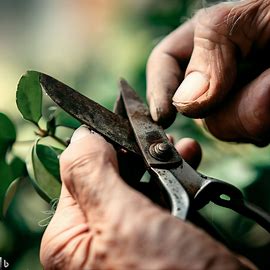
To maintain the effectiveness of your pruning scissors, it’s important to keep them clean and sharp.
After each use, wipe the blades with a clean cloth or tissue to remove any sap or residue.
If necessary, you can also sterilize the blades by wiping them with rubbing alcohol.
Regularly check for any signs of rust or damage on the blades. Sharpening may be necessary if you notice that the cuts are not as clean as before.
Some scissors come with replaceable blades, making maintenance even easier.
Safety Precautions when Using Scissors to Prune
While using scissors to prune can be convenient and effective, it’s crucial to prioritize safety. Always wear protective gloves and eyewear while pruning to avoid any accidents or injuries from thorns or falling debris.
Be mindful of your body positioning and ensure you have a stable footing when reaching higher branches. It’s also advisable not to overextend your reach in order to prevent strain or loss of balance.
Benefits and Drawbacks of Using Scissors for Pruning
Using scissors for pruning offers several benefits. They are easily accessible tools found in most households, eliminating the need for purchasing specialized equipment. Additionally, their small size enables precise cutting in tight spaces without causing excessive damage.
However, there are some drawbacks as well. The limited length of scissors may make it challenging/impossible for reaching taller branches effectively without damaging other parts of the plant unintentionally.
During such “inconvenient” trimming sessions, you may require more frequent breaks due to fatigue associated with repetitive movements.
This is not the case however with larger hand-held shears as they offer longer handles providing better leverage and overall control during use by evenly distributing weight across the user’s arm, forearm, shoulder, muscles, and wrists.
Comparing Different Types of Cutting Tools for Pruning
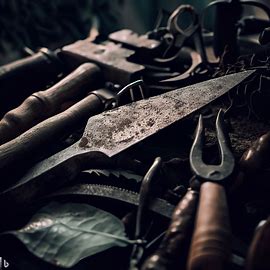
When considering different cutting tools for pruning purposes, it is essential to understand their distinct advantages and limitations.
Hand pruners
These specialized tools are designed specifically for pruning and offer greater leverage and cutting power than scissors. They come in various shapes and sizes to suit different plant types and branch thicknesses.
Pruning shears
Similar to hand pruners, pruning shears have longer handles that enable more extended reach while providing better control. Their curved blades are ideal for making clean cuts on thick branches.
Loppers
These larger tools feature long handles with gear mechanisms, allowing them to cut through thicker branches with ease. Loppers are particularly useful for pruning trees or shrubs.
Conclusion
While scissors can be used for pruning small plants with caution and proper technique, it’s important to consider the limitations they may have in reaching taller branches or dealing with thicker foliage.
It is always best to choose the appropriate cutting tool based on your specific needs and the type of plants you intend to prune.
Remember to prioritize safety by wearing protective gear, maintaining the sharpness of your scissors or other cutting tools regularly, and practicing good body positioning throughout the pruning process. Happy pruning!

